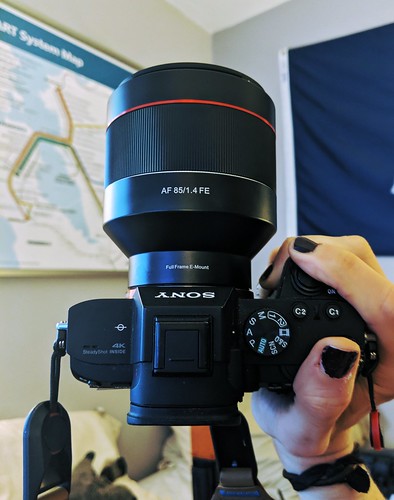I think there's a bunch of issues at the same time. I tried looking for the exif info for the photos but there are none. So that means they have been processed a bunch, and you have confirmed as such. The less the processing steps, the better IMO.
The RAW files would have helped.
Anyway, let's take the first photo. I assume, what you are not happy with are things like how the foliage are smeared together when you view at 100%? It could be a combined result of the aperture used, processing steps (sharpness settings and jpeg compression) and the lens itself. I'm assuming you're using the Nikkor 35mm f/1.8 DX, which should be a good general purpose lens. But it is a consumer lens. These lenses are typically not super sharp wide open. I don't think you used it wide open in the first shot, but the best settings are possibly around f5.6 - f8. Having said that, take similar photos in similar light with those aperture settings at a LOW ISO, then process the RAW, zoom in 100% while performing the sharpness edits and check, don't utilize noise reduction for daylight photos, and while converting, keep the jpeg settings to 95% or above.
Another issue is foliage against harsh light. It's typically just a no, no for me. Foliage looks gross in harsh light, no matter what. I find having to use negative clarification and soft sharpness settings. Time of the day is VERY important, as is where the light is coming from!
Another issue is where is the focusing point? Since lenses perform the best at center, center it at your point of interest.
Another issue is the lens's physical limits, with this 50mm equivalent consumer prime, you can't expect to zoom in 100% and expect to clearly see the runner in that path on the left of the frame. That's what sharp telephoto primes are for. The lens itself is hitting it's limits. Case in point:
 DSCF4611_1
DSCF4611_1 by
TIKI, on Flickr
I took a photo of that bumblebee in my mom's backyard to test the XT3's AF abilities with the latest firmware (it's amazing). But the lens can't resolve more than that. The lens has hit it's physical limit there and it would be unfair of me to expect more so from a mid range 35mm equivalent lens. I'd need a sharp tele, or a tele with macro capabilities.
So having said that, different horses for different courses. The 50mm equivalent is best for portraits, close up stuff, street scenes etc. Perfectly fine for landscapes, but you'd have to be extra careful to use it at it's best settings, as well as the camera's best settings, if you want the most details.
So the other option is to basically research the wider angle lenses that can fit that mount. I believe this DX mount can take FX lenses, so you could try the FX version of the same lens or the 1.4 version. Both should be sharper, as they are designed for full frame. Or in the meantime use technique to cover up the lack of sharpness based on what I said.
Having said all that, I think most of your issues are coming from jpeg compression and the lens itself. As for the night shot, that's difficult. Modern cameras with better dynamic ranges do better. Again, that's a matter on base ISO settings, like what's the highest ISO that can be used without introducing too much noise. You positioning yourself where the lighting on your subject is the best. You are against the light there, might have been better directly behind or in front of the statue, it would have been side lit, and you still would have gotten the castle in frame. So it's a lot of technique. Keep taking photos and enjoy!






 DSCF4611_1
DSCF4611_1




 temp_example
temp_example
